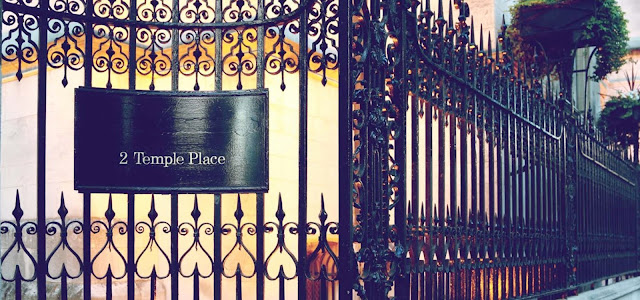Pragmatic Romanticism and Modest Modernism at Two Temple Place
Geoff Eagland is one of our current volunteer Gallery Stewards at Two Temple Place. Geoff retired a few years ago after a lifetime in the computer industry. He returned to university for an MA in History of Art, where his studies led him to Two Temple Place’s 2017 exhibition, Sussex Modernism: Retreat and Rebellion. Impressed by what he learned about it, he became a volunteer and then a guide. Geoff believes he is truly privileged to work with an inspiring team of volunteer staff. He maintains that the thing that really sets Two Temple Place apart for him is our visitors - their friendliness, courtesy, informed interest and sheer niceness - and it is this that will ensure he remains a volunteer and guide for many years to come.
"As you pass through its ornate iron gateway and approach Two Temple Place across the courtyard your attention is drawn to the building’s crenellated frontage with its gargoyles and oriel windows and to the stately verdigris lamp-stands flanking the stairs to the heavily armoured front door. You are entering a world of Victorian Gothic romanticism. You will be less aware that this world is also one of progressive Victorian modernism, albeit somewhat veiled. These contending world views, romanticism, looking back to a mythical past for inspiration, and modernism, looking forward to an unbounded future, drove the construction of Two Temple Place and its creators.
 |
This is in contrast to the opposite, and ultimately more significant, cultural thrust of the period, which is essentially modernist, as seen in Impressionism in art and in the realism of writers such as Dickens. But it is most apparent in the great inventions and public works of the times: the early 1890s saw the discovery of Xray, the launching of Edison’s telegraph, the first motion pictures and early commercial car production; Bazalgette’s Embankment on which Two Temple Place itself stands was constructed only a few years before and thereby enabled its commissioning by William Waldorf Astor.
Astor himself was in the romantic rather than modernist camp. He saw himself as the descendant of pioneers who had left the Old World to conquer and civilise the New World, as exemplified by the choice of Columbus’ Santa Maria for the building’s weather vane. His penchant for romanticism clearly shows in the Gothic revivalist style he commissioned from Pearson and in the sources he chose for its decor. Beautifully carved figures of characters from the works of romantic writers, such as Dumas, Scott and Mallory, are featured in all the public rooms; it especially shows in his choice of the American writers whose characters surmount the ebony columns in the stairwell as they look back wistfully to almost mythical earlier times in American history.
Despite their romantic leanings, Astor and Pearson were happy to exploit the fruits of scientific modernism in Two Temple Place: in its siting, and in its early use of electric light and telephone - even to celebrate them in Frith’s lamp-stands. Two Temple Place and Astor display what might be called pragmatic romanticism - somewhat occluding its modest modernism - as in fact did many of the buildings of the times in Astor’s old home, New York, including his family’s original Waldorf Astoria hotel.
Despite their romantic leanings, Astor and Pearson were happy to exploit the fruits of scientific modernism in Two Temple Place: in its siting, and in its early use of electric light and telephone - even to celebrate them in Frith’s lamp-stands. Two Temple Place and Astor display what might be called pragmatic romanticism - somewhat occluding its modest modernism - as in fact did many of the buildings of the times in Astor’s old home, New York, including his family’s original Waldorf Astoria hotel.
Having decamped to London, Astor gave full rein to his romantic imagination, commissioning Two Temple Place, his own historic house to rival on a smaller scale those he merely purchased, Cliveden and Hever Castle. It has survived bombing and has worked well for over a hundred years in its originally intended purpose as an office. Its pragmatic romanticism has gently veiled its quiet modernism; both deserve to be celebrated. Astor and Pearson would be justifiably proud of their achievement."
For more information on Hever Castle, please visit their website here.
For more information on Cliveden, please visit their website here.
Images: © Two Temple Place










Readers might also be interested to know about my book on Temple Place's patron, architecture, architect, design and decorative scheme, ‘Two Temple Place: A Perfect Gem of late Victorian Art, Architecture and Design’ (2013), published by The Bulldog Trust.
ReplyDeleteHi Barbara! You are right! If anyone would like to find out more the book is available for £14.00 including postage. Please send an to email info@twotempleplace.org. We also have our Unbound: Visionary Women Collecting Textiles exhibition catalogue available for purchase at £9.50. Please note we are waiting for a safe time to send parcels and will not be sent immediately.
Delete